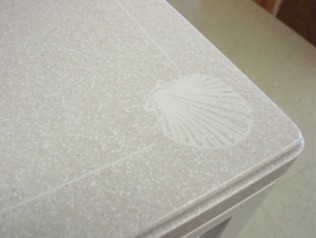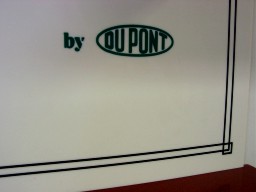 |
Single color inlays are the easiest and least expensive.
Route a groove, fill it, sand it smooth. Okay, it may not be that
easy, but it is close.
This makes it the most affordable of filled inlays. the seashell in the
image on the left was ripped from Corel Draw, in vector format, so it was
easy to resize and convert to g-code (the code that most CNC routers read).
The line is, well, a line. |
 |
The most difficult of filled inlays is the multi-layered
type, as shown to the left. With overlapping colors, multiple visits to the
router are necessary. The rose, bottom left, with three colors, and the
lavender orchid on the upper right, with five colors, both required three
trips to the router. This was because we could isolate the colors on two
different areas. The bottom right required at least five trips. Designing
with a graphics program allows for creative use of layers, to help with this
process. the layers were separated not by object, or color, but by trips to
the router. We simply made visible the layer we were working on at the time,
and processed those images. |


